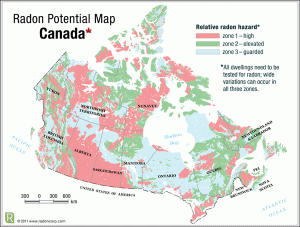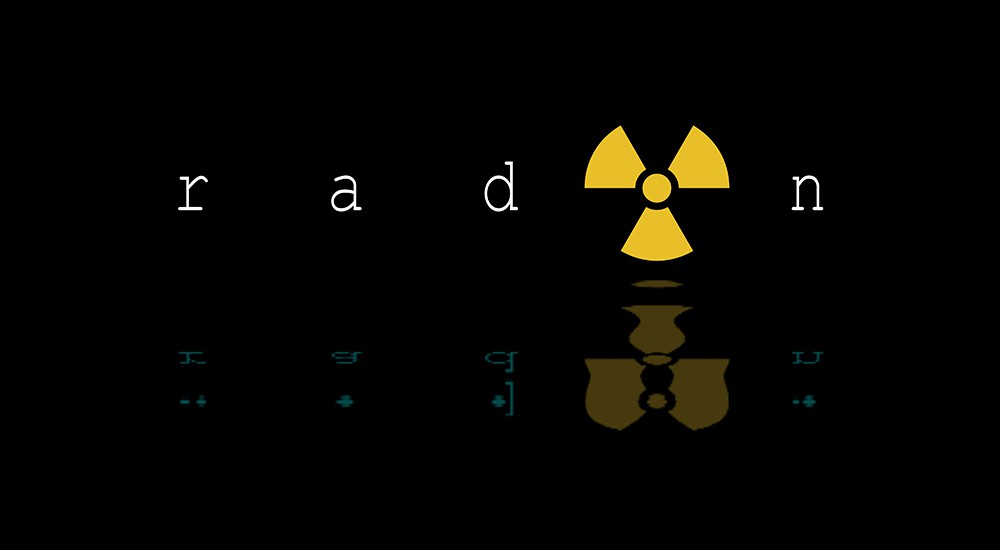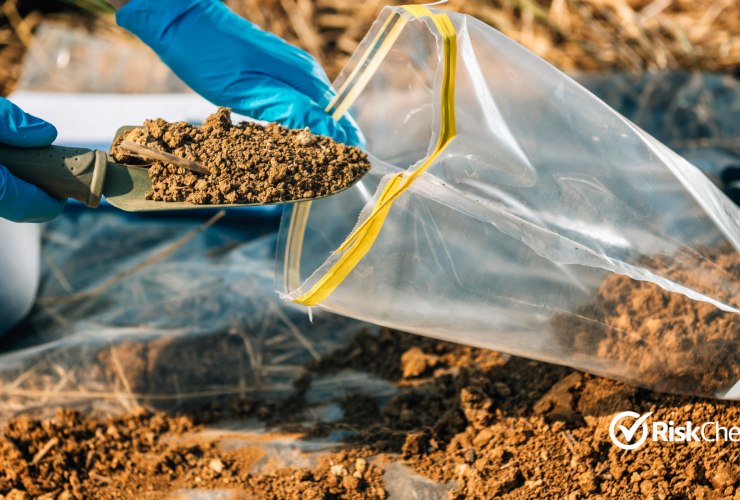Radon – what is it, and what are the risks?
What is Radon? ☢
Radon is a colourless, odourless, radioactive gas, a decay product of uranium in rocks and soil.
Radon can enter buildings from any opening where a building contacts the soil due to air pressure differentials between a building and the soil surrounding the building foundation. The lower air pressure in a building can draw air and other gasses up and into the building from the relatively higher pressure soil.
Radon is found across Canada. Concentrations differ greatly but are usually higher in areas where there is a higher amount of uranium in underlying rock and soil.
Do you know if your building needs to be tested for Radon?

What are the Health Risks? ☢
Radon exposure is the number two cause of lung cancer, after smoking. Approximately 16% of lung cancers are estimated to be from radon exposure, resulting in more than 3,200 deaths in Canada each year.
When radon is released from the ground into the air out in the open, it is sufficiently diluted and not a health concern. However, in enclosed spaces in buildings, radon can sometimes accumulate to high levels that become a health risk.
Radon gas breaks down or decays to form radioactive elements that can be inhaled into the lungs. In the lungs, decay continues, creating radioactive particles that release small bursts of energy. This energy is absorbed by nearby lung tissue, damaging the cells. When the genetic code of the cells is damaged, they have the potential to become cancerous.
Exposure to high levels of radon in indoor air results in an increased risk of developing lung cancer. The risk of cancer depends on the level of radon and how long a person is exposed to those levels, but the risk is real.
The current Canadian guideline for radon in indoor air is 200 becquerels per cubic meter (200 Bq/m3). A Becquerel is a unit of measurement equal to one radioactive disintegration per second.

- LEED Indoor Environmental Quality (EQ) Performance Credits
- BOMA Best Credit 3.0 Radon Risk Assessment






